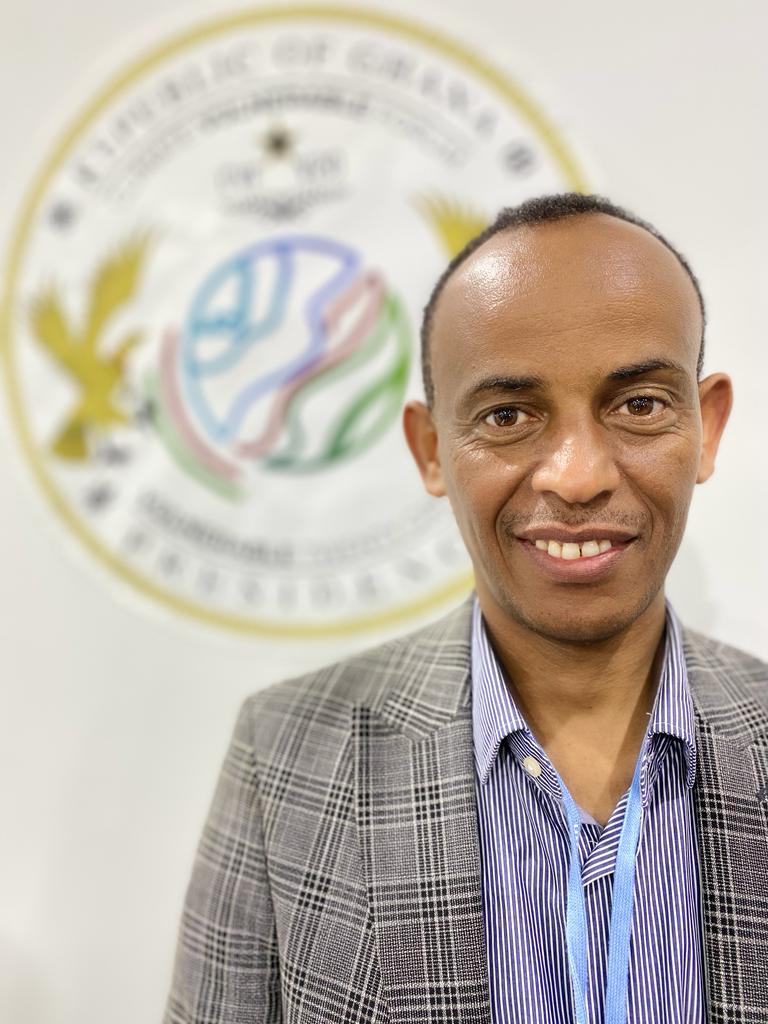Ethiopia: Nurturing the Seeds of Change at COP27
By Mr. Eyob Tenkir, CVF Capacity-Building Fellow

Mr. Eyob Tenkir, CVF Capacity-Building Fellow
Like many CVF members, Ethiopia is suffering from the ever-increasing impacts of climate change, despite its minimal contribution to global warming. Despite these impacts, which include frequent locust swarms which devastate crops and harm to livestock resources, the country is building and implementing a nationwide climate response.
Having ratified the UN’s key climate treaty (UNFCCC) in 1994, Ethiopia has created an enabling environment for a wide range of climate measures. Ahead of COP27, the country is drawing on its experience to highlight key priorities for a fair and ambitious global response to climate change.
Enabling climate action
Ethiopia has formulated a broad range of national initiatives to combat climate change and address its impacts: in addition to its Nationally Determined Contribution (NDC), it has put in place a Climate Resilient Green Economy Strategy (CRGE); an ambitious tree-planting scheme known as the Green Legacy Initiative; a REDD+ Strategy for sustainable forestry; a National Adaptation Plan (NAP) and a Low Emission Development Strategy (LEDS) through 2050.
By mainstreaming key policies into the country’s Ten-Year Development Plan (2021-2030), Ethiopia has created an enabling environment for climate action. This environment points to the country’s fulfilment of middle-income status by 2025, realised through the adoption of low carbon, resilient, green growth actions. These long-term plans and strategies emphasise the agricultural sector in particular, with a focus on the livestock, land conversion and forestry sectors, which are expected to remain the main contributors to greenhouse gas (GHG) emissions.
Funding for a fair and ambitious global response
Implementing and sustaining these strategies and long-term plans will require huge financial resources as well as support from the global community. What are Ethiopia’s priorities for the upcoming international discussions at COP27?
Ethiopia is working to strengthen adaptation to support the country’s vulnerable communities and ecosystems. However, the country is facing an adaptation gap with far-reaching impacts in areas such as agriculture, health, infrastructure and biodiversity. COP27 must provide the opportunity for further elaboration of adaptation planning and implementation, and a chance to reach agreement on the global goal, adaptation needs and associated cost.
As a country on the frontline of climate change, Ethiopia faces both economic and non-economic impacts. The burden of loss and damage on the country is significant, from the frequent occurrence of locusts, to impacts on vital livestock resources. Therefore, Ethiopia insists that negotiators at COP27 make real progress on reaching a successful outcome to reduce loss and damage.
Ethiopia is also calling on COP27 negotiators to give due attention to the carbon credit market (under Article 6 of the Paris Agreement). This requires the finalising of technical issues and a move to full implementation, since this is considered a crucial instrument to increase mitigation ambition, placing high importance on environmental integrity.
The transparency mechanism is a tool to enhance climate action but it requires support to enable developing countries to build and maintain national transparency systems and meet the reporting requirements articulated in the Paris Agreement. Ethiopia will be pressing for capacity building to install its transparency mechanism as another priority at COP27.
Knowledge sharing: Nature-based solutions
The Green Legacy Initiative (GLI) was initiated by the Prime minister of Ethiopia. It led to the planting of over 25 billion seedlings within four years. As well as improving agricultural productivity and food security (by planting multi-purpose tree and fruit tree seedlings respectively), the initiative has also enhanced ground water resources, biodiversity conservation and greenhouse gas sequestration. In addition, planting of seedlings in cities helps urban areas to adapt to climate change impacts.
The GLI also offered seedlings to neighbouring countries to inspire them and foster a shared interest in its objectives. A side benefit is that this could reduce the displacement of people caused by conflict over access to grazing land, water and forests.
International support for such initiatives is something Ethiopia also hopes for at COP27 – part of its broader ethos of scaled up sustainability and greater cooperation with the international community.
Ambitions for COP27
By sharing its experience and insight, Ethiopia’s overarching priorities at COP27 are to advance the implementation of Nationally Determined Contributions (NDCs), including progress on adaptation, mitigation efforts, the carbon credit market and the release of finance to enhance the implementation of climate action.

